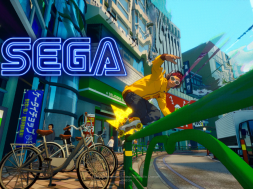
The shooter genre had a very interesting time in 2016. Overwatch exploded out of the gate and proved colourful, lighthearted shooters could dominate. Genre titan Call of Duty saw its sales continue to drop as the series’ continued sci-fi focus proved detrimental. Meanwhile, its rival Battlefield performed better than ever before by rolling back the clock to World War One. However, no development in the genre was as interesting as the return of Doom. Completely different to every other game in the genre released not just last year but in many years, Doom 4 (or Doom 2016, I’ll be calling it Doom 4) defied unfortunate expectations set by its publisher’s odd behaviour and poor multiplayer beta to be one of the finest games of the year. Most importantly, it did this by doing something precious few revivals of classic, retro franchises do: it remembered and respected its roots.
[pullquote]it is increasingly important for developers to appreciate what made the foundations they’re building on so beloved[/pullquote]
It wasn’t always this way, Doom 4 had a long and troubled development and was even restarted partway through to be retooled into the game it is today. We’re all the better for it, as released beta footage of Doom 4’s original form shows that it was the exact opposite of what it is now. Originally, Doom 4 was a very poor-looking Call of Duty clone, with a dull brown ruins-based environment, cover-based shooting, generic-looking guns and maps comprised mostly of corridors. It continued down the path of Doom 3, shying away from the series’ fast-paced, high-octane shooting in sprawling maps packed with enemies. Instead, it tried to follow in the steps of what was then popular.
Reboot per chance to succeed
This is the failing of so many revivals in this age of reboots. They forget what made the originals great, believing success requires following in lock-step behind popular titles. The Doom we got abandoned the direction of the Call of Duty clone and went back to its roots, and was all the better for it. Compared to its peers, Doom 4’s old ways appear radical now. A normal movement speed twice that of sprinting in any other shooter, no reloading, and no regenerating health. The prominence of its single player campaign is also arguably revolutionary, in a generation where multiplayer is increasingly the focus.
The worst case scenario of embracing one’s roots is best exemplified in last generation’s Duke Nukem Forever. Duke Nukem Forever bears a lot of similarities to Doom 4, but its poor and tepid execution marks it as a total opposite of Doom 4. A long-dormant classic FPS franchise from the 1990s PC era revived in full 3D. Duke Nukem Forever reworked mechanics and elements to suit a new generation. It adopted modern trappings like a fully-fledged narrative with cutscenes and quick-time events. Standard gameplay implemented QTEs in melee kills, obtained by stunning enemies through sustained damage. In many ways, Duke Nukem Forever is a blueprint for the concept of Doom 4. Where they differ is that while Doom 4 eventually embraced its roots, Duke Nukem Forever rejected them.
The classics
Duke Nukem 3D was as classic PC FPS as they come. It was the same sort of high-speed action as Doom before it: a bevy of creative weapons, no-regen health system, hordes of enemies, all the expected tropes. Duke Nukem Forever moved away from all of this. In its original form, it restricted you to two guns (four following a patch). The health system is the now-standard regenerating variety, and Duke Nukem is no longer fast. Duke now moves at a normal human speed, only able to sprint for a few seconds before tiring and slowing down.
In short, the classic gameplay is ditched for a poor man’s Call of Duty, and the game suffered massively for it. Prime among its myriad problems is the issue that Duke Nukem Forever is simply not fun to play. Slow, plodding and unsatisfying, it rejected what made the original fun in favour of aping current trends, and doing it poorly. This was done in the belief that it would make it sell. In doing so, however, the most it could ever hope for was mediocrity.
Doom 4 respects its roots, and it carries that appreciation into the implementation of its new mechanics and trappings. Its melee kill animations are only a second or two long and feed into the gameplay loop by spilling health everywhere if the player is low. Its narrative flaunts the attitude most likely shared by the player: all that matters is killing demons. Anything that gets in the way of that is cast aside. And in accepting and celebrating hat it is, Doom 4 excelled.
As reboots, revivals and crowdfunded spiritual successors materialise and finally release, it is increasingly important for developers to appreciate what made the foundations they’re building on so beloved. Doom 4 is a testament to what can be done when a franchise’s unique aspects, its defining traits and even its quirks aren’t fearfully swept under the rug or shooed away in favour of following the leader. After all, the industry’s current titans only became so because the elements others copy were original and exciting themselves, once upon a time. Failure to realise that pervades the industry, and as long as it does, we’re doomed to be stuck with likes of Duke Nukem Forever and Dead Rising 4.
However, slowly but surely, some are beginning to wise up.










